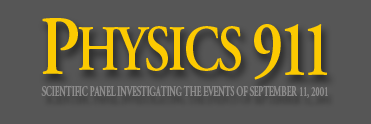|
The following was taken from a joint FAA/Department of Defense order 7610.4J for ‘special miltary operations’, outlining exact procedures to follow in the event of a possible hijacking (under conditions specified above)
SPECIAL MILITARY OPERATIONS
Order 7610.4J
FOREWORD
This order specifies procedures for air traffic control planning, coordination and services during defense activities and special military operations. These procedures apply to all activities conducted in airspace controlled by or under the jurisdiction of the Federal Aviation Administration (FAA). The procedures contained herein shall be used as a planning guide by Department of Defense personnel for operations in all areas. All facility personnel are required to be familiar with the provisions of this order which pertain to their operational responsibilities. Therefore, when a situation arises for which there is no specific procedure covered in this order, personnel shall exercise their best judgment. Although every effort has been made to prescribe complete procedures for these activities, it is impossible to provide them to cover every circumstance. For administrative purposes, the military services have included this order into their inventory. This has been done to emphasize its applicability to DOD personnel including the National Guard and the Reserve Forces. Operational control and administration of this order remains under the purview of the FAA. Any changes will be coordinated prior to adoption, consistent with FAA policy.
Chapter 7. ESCORT OF HIJACKED AIRCRAFT
Section 1. GENERAL
7-1-1. PURPOSE
The FAA hijack coordinator (the Director or his designate of the FAA Office of Civil Aviation Security) on duty at Washington headquarters will request the military to provide an escort aircraft for a confirmed hijacked aircraft to:
a. Assure positive flight following.
b. Report unusual observances.
c. Aid search and rescue in the event of an emergency.
7-1-2. REQUESTS FOR SERVICE
The escort service will be requested by the FAA hijack coordinator by direct contact with the National Military Command Center (NMCC). Normally, NORAD escort aircraft will take the required action. However, for the purpose of these procedures, the term "escort aircraft" applies to any military aircraft assigned to the escort mission. When the military can provide escort aircraft, the NMCC will advise the FAA hijack coordinator the identification and location of the squadron tasked to provide escort aircraft. NMCC will then authorize direct coordination between FAA and the designated military unit. When a NORAD resource is tasked, FAA will coordinate through the appropriate SOCC/ROCC.
7-1-3. HANDLING PRIORITY
When the situation requires an expedited departure of the escort aircraft, the aircraft shall be afforded priority consideration over other departing aircraft.
7-1-4. CONTROL RESPONSIBILITIES FOR U.S. AIRSPACE
a. When hijacked aircraft is within FAA radar coverage, escort aircraft shall be controlled by the appropriate FAA facility.
b. When a hijacked aircraft is not within FAA radar coverage but within military radar coverage, escort aircraft may be controlled by the military for the escort phase only.
c. When escort aircraft are under military control, separation between the escort aircraft/hijacked aircraft and other IFR traffic is the responsibility of the FAA. Separation shall be provided through the application of appropriate altitude reservations as required.
d. When escort aircraft is under FAA control, standard air traffic control separation shall be applied. In no case shall any clearance or instruction to the aircraft compromise ATC standards.
e. When tanker aircraft are employed, the designated tankers and escort aircraft shall be under FAA control, and appropriate aerial refueling procedures shall apply.
7-1-5. CONTROL RESPONSIBILITIES FOR CANADIAN AIRSPACE
Escort aircraft entering Canadian airspace from the U.S. shall be transferred to NORAD control
in accordance with FAA/NORAD procedures prior to the aircraft entering Canadian airspace. Escort aircraft entering U.S. airspace from Canada will be transferred from NORAD control in the same manner when transfer of control is effected. When the hijacked aircraft is not within the coverage of the NORAD surveillance system in Canada, the escort mission will be discontinued.
7-1-6. AIR/GROUND COMMUNICATIONS SECURITY
Except when specifically directed otherwise by FAA headquarters, every precaution shall be taken to prevent the hijacker/s from gaining knowledge that an escort is being conducted. When communicating with escort aircraft, ensure that transmissions are made on a different frequency from the one being used to communicate with the hijacked aircraft and are not simultaneously broadcast on a frequency which can be overheard by the hijacked aircraft.
7-1-7. WEATHER/FLIGHT SAFETY LIMITATIONS
If weather conditions or other flight safety factors make the escort mission impractical, the mission shall be terminated by the controller or the pilot, and the FAA headquarters hijack coordinator shall be advised immediately. The pilot of the escort aircraft will keep the controller advised of adverse weather or any other hazardous conditions. The pilot will immediately terminate the mission if radio contact with the control facility is lost, maintaining the last assigned altitude and/or radio failure procedures unless the pilot has received specific instructions to the contrary.
|




 List of Members
Log in
List of Members
Log in